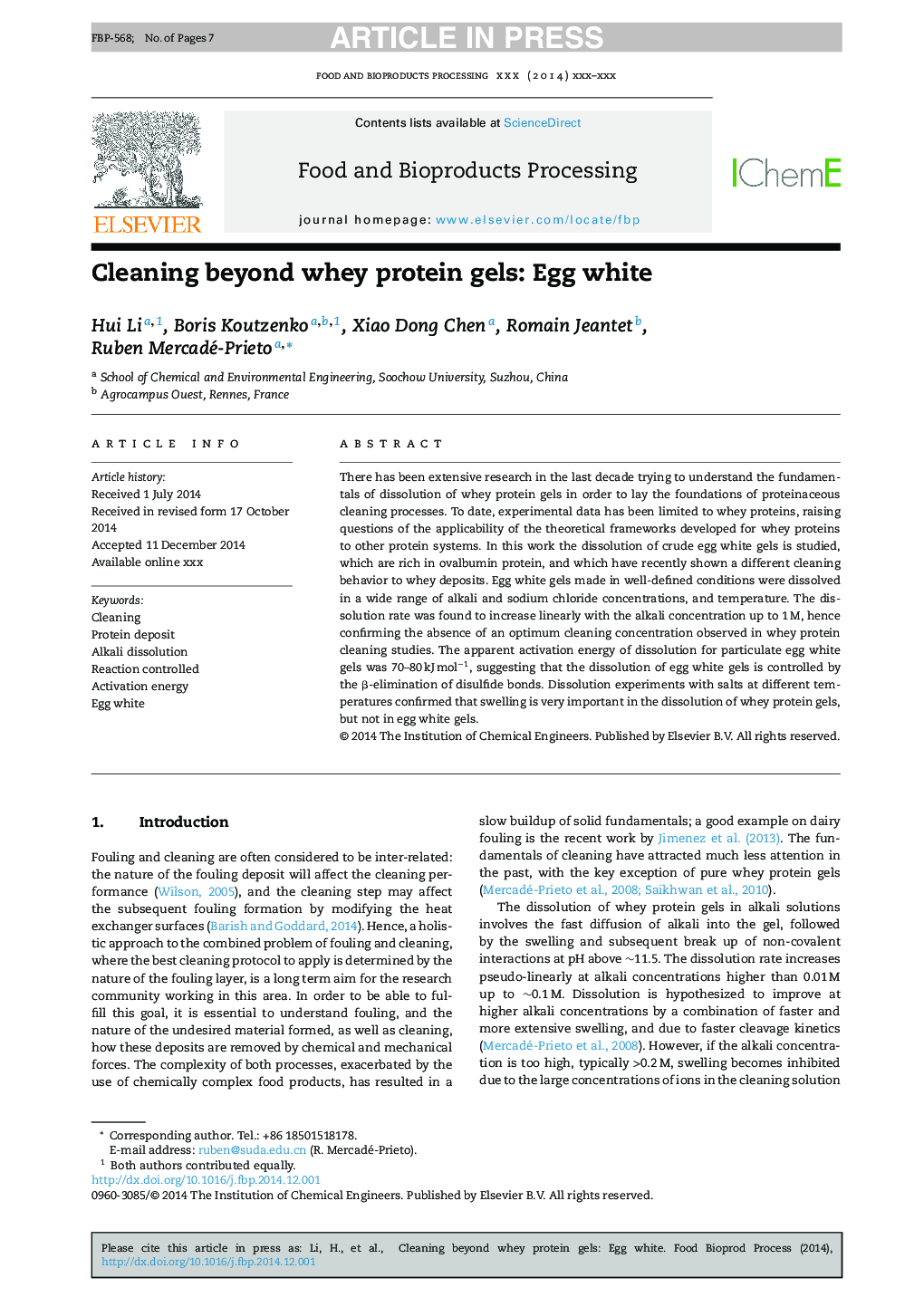| Article ID | Journal | Published Year | Pages | File Type |
|---|---|---|---|---|
| 6488558 | Food and Bioproducts Processing | 2015 | 7 Pages |
Abstract
There has been extensive research in the last decade trying to understand the fundamentals of dissolution of whey protein gels in order to lay the foundations of proteinaceous cleaning processes. To date, experimental data has been limited to whey proteins, raising questions of the applicability of the theoretical frameworks developed for whey proteins to other protein systems. In this work the dissolution of crude egg white gels is studied, which are rich in ovalbumin protein, and which have recently shown a different cleaning behavior to whey deposits. Egg white gels made in well-defined conditions were dissolved in a wide range of alkali and sodium chloride concentrations, and temperature. The dissolution rate was found to increase linearly with the alkali concentration up to 1 M, hence confirming the absence of an optimum cleaning concentration observed in whey protein cleaning studies. The apparent activation energy of dissolution for particulate egg white gels was 70-80 kJ molâ1, suggesting that the dissolution of egg white gels is controlled by the β-elimination of disulfide bonds. Dissolution experiments with salts at different temperatures confirmed that swelling is very important in the dissolution of whey protein gels, but not in egg white gels.
Keywords
Related Topics
Physical Sciences and Engineering
Chemical Engineering
Bioengineering
Authors
Hui Li, Boris Koutzenko, Xiao Dong Chen, Romain Jeantet, Ruben Mercadé-Prieto,
